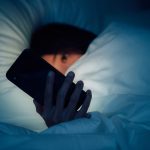End of daylight savings time impacts sleep

 Holly Hendershot | Herald-Standard
Holly Hendershot | Herald-Standard
Holly Hendershot | Herald-Standard
The Teen Space will be open the same hours as the library until the school year, when the hours may be extended.
Twice a year, it happens: Americans adjust their clocks, springing forward or falling back.
At 2 a.m. this Sunday, daylight savings time ends, so most people in all states except Hawaii and Arizona (neither follows daylight saving time) will turn their clocks back and gain one hour of sleep.
But, experts say, much like springing forward in March, falling back can carry real health consequences. Some health groups, including the American Medical Association and the American Academy of Sleep Medicine, have long promoted adopting standard time year-round.
“We should get rid of (daylight saving time),” said Dr. Randy Nelson, chair of the Department of Neuroscience at West Virginia University (WVU) and one of the world’s foremost authorities on circadian biology.
The time changes disrupt the circadian rhythms, he said, leading to increased fatigue and a change in cognition.
“Studies show an increase in traffic accidents on the Monday after time change, whether it’s spring or fall. And switching to standard time in the fall increases stroke risk,” Nelson said.
A September Stanford University report echoes his assertion that the biannual time shift is bad for health because of its disruption to circadian rhythms – a roughly 24-hour cycle that determines when we become sleepy and when we’re more alert.
That circadian clock affects more than sleep. It also impacts heart rate, blood pressure, stress hormones and metabolism.
The study suggests that sticking with either time option would be healthier, but advises that permanent standard time is better because it provides more hours of morning daylight and aligns more with the circadian rhythms.
The study says that adopting permanent standard time could prevent about 300,000 strokes annually in the U.S. by preventing the health disruptions caused by switching clocks for daylight savings time. The research also adds to prior reports of spikes in heart attacks, injuries and traffic crashes after people lose an hour of sleep when daylight savings time starts in March.
It might not seem significant, but even an hour change on the clock can disrupt sleep schedules because work and school start times stay the same.
That’s a problem because so many Americans are already sleep-deprived.
An estimated 1 in 3 adults in the U.S. sleep less than the recommended seven-plus hours a night, and more than half of U.S. teens don’t get the recommended eight hours on weeknights, according to the American Academy of Sleep Medicine.
A time shift also can affect shift workers whose schedules are already out of sync with circadian rhythms.
And some people who battle seasonal affective disorder, a type of depression that can be impacted by the shorter days and less sunlight in fall and winter, can struggle.
The biannual time change “is especially not good for those in those two populations,” said Nelson.
“People with seasonal affective disorder struggle with the darker mornings, and it’s a mess for our night shift workers,” he said. “Even if they’re full-time night workers, there are the days off and the weekends when they’re not working, and it’s really hard to maintain a regular circadian rhythms. So (the time change) really doesn’t help our night shift workers, our medical people, our first responders.”
So, how can people prepare for the time change?
One way circadian rhythms get scrambled is by being exposed to light at the wrong time, and people generally need more morning light and less evening light to keep body clocks synchronized.
“Expose yourself to sunlight as early in the morning as possible because that’s what you need to re-set your circadian rhythms,” said Nelson. “We need to get out there and get that sun.”
Avoid prolonged use of light-emitting screens before bedtime, and prioritize your sleep environment – keep your room dark, quiet and cool, Nelson suggested.
Sleep specialists also say exercising during the day and avoiding caffeine or alcohol before bed can help make the transition smoother.
And, while it’s too late to do this year, Nelson suggests shifting your bedtime by 15 minutes later each day for a few days leading up to the change.
A recent Gallup poll found that 50% of Americans want to get rid of daylight saving time, and the AASP reported as many as 63% of the population wants to end it.
There have been several efforts at the state, regional and national levels to do away with the practice – in April, the U.S. Senate Committee on Commerce, Science and Transportation held a hearing entitled “If I Could Turn Back Time: Should We Lock the Clock?” – but so far, none have been successful.
Nelson, too, has advocated for the end of daylight saving.
“I’ve testified plenty of times, signed enough petitions, voiced my opposition. I don’t know why we still have it, despite the great health arguments against it, ” said Nelson. “It’s just a bad policy that goes on.”
But for now, plan to change those clocks twice a year.

